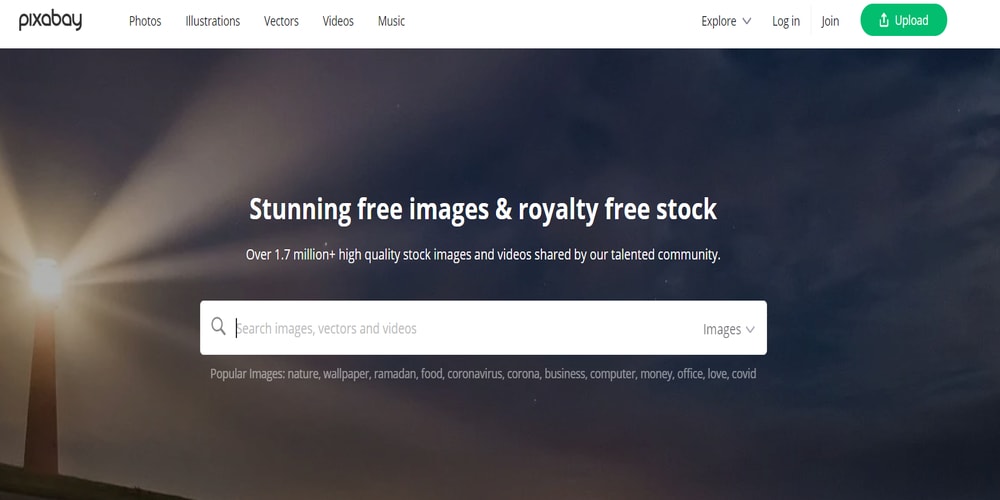If you’ve ever browsed Shutterstock for the perfect image and then noticed that most of them are covered with watermarks, you might wonder how to access those high-quality photos without the distracting marks. Using Shutterstock photos without watermarks is essential if you’re creating professional content, marketing materials, or personal projects where quality matters. In this guide, we’ll walk you through the right way to get access to pristine, watermark-free images legally and ethically, ensuring your projects look polished and credible. So, let’s dive into how
Understanding Shutterstock Watermarks and Licensing

Before we talk about how to use Shutterstock photos without watermarks, it’s important to understand what watermarks are and why they exist. A watermark is a semi-transparent overlay placed on an image to protect the creator’s rights and prevent unauthorized use. Shutterstock uses watermarks as a visual cue that the image is copyrighted and not freely available for use.
Here’s how it works:
- Watermarked previews: When browsing Shutterstock, you see watermarked versions of images. These are low-resolution or marked versions meant for preview purposes only.
- Licensing: To legally use a photo without a watermark, you need to purchase a license. Shutterstock offers different licensing options, such as standard and enhanced licenses, depending on your intended use.
Why do you need a license? Because the copyright holder (photographer or agency) retains rights to the image, and using it without proper licensing can lead to legal issues. Once you buy a license, you’re granted the right to use the high-resolution, watermark-free version of the photo in accordance with the license terms.
Understanding the licensing process is crucial. It ensures you’re respecting creators’ rights and avoiding copyright infringement. So, when you see a watermark, remember that it’s there to protect the photographer’s work until you purchase the appropriate license to use the image legally and without watermarks.
How to Purchase and Download Watermark-Free Shutterstock Images

So, you’ve found that perfect image on Shutterstock, and you’re ready to use it without those pesky watermarks. Here’s the straightforward process to purchase and download high-quality, watermark-free images that you can confidently use in your projects.
Step 1: Create a Shutterstock Account
If you haven’t already, you’ll need to sign up for a Shutterstock account. It’s quick and easy—just provide your email, create a password, and you’re good to go. Having an account allows you to manage your downloads and purchase history conveniently.
Step 2: Choose the Right Subscription or Image Pack
Shutterstock offers various options depending on your needs:
- Subscription Plans: Ideal if you need multiple images regularly. Plans typically range from 10 images per month to unlimited downloads (with certain limits).
- On-Demand Packs: Buy a set number of images upfront, perfect for sporadic usage.
Compare the plans to see which fits your budget and usage best. Sometimes, buying images individually is also an option, especially if you only need a few.
Step 3: Search and Select Your Image
Use the search bar to find your desired image. Use filters like orientation, color, size, and image type to narrow down options. Once you find the perfect shot, click on it to view details.
Step 4: Purchase the Image
Click the “Add to Cart” button. Review your selection and proceed to checkout. If you haven’t purchased before, you’ll need to enter your billing information. Shutterstock accepts various payment methods, including credit cards and PayPal.
Step 5: Download Your Watermark-Free Image
After completing the purchase, you’ll be directed to your download page. Click the download button, and the high-resolution, watermark-free image will be saved to your device. You can now use it in your projects, knowing it’s licensed for your intended use.
Important Tips:
- Always check the license type to ensure it covers your project—most Shutterstock images are covered under standard or enhanced licenses.
- Keep your receipt and licensing information for future reference or legal purposes.
By following these steps, you can easily access high-quality, watermark-free Shutterstock images that elevate your work and give you peace of mind regarding licensing.
Alternatives to Buying Shutterstock Images
While Shutterstock is a fantastic resource, it’s not the only place to find great images, especially if you’re on a budget or looking for free options. Here are some popular alternatives that can help you source images legally and ethically without necessarily purchasing from Shutterstock.
Free Stock Photo Websites
There are numerous websites offering high-quality images for free, often under Creative Commons licenses. Just keep in mind that some images may require attribution.
- Unsplash: Offers a vast library of stunning, high-resolution photos contributed by photographers worldwide. Great for almost any project.
- Pexels: Provides free photos and videos, with a wide variety of categories and styles.
- Pixabay: Contains photos, illustrations, vectors, and videos—all free to use without attribution.
Paid Stock Photo Platforms with Affordable Options
If you need more specific or exclusive images, consider these platforms:
- Adobe Stock: Offers a subscription model similar to Shutterstock but often has flexible plans.
- Provides a range of pricing options, including credit packs and subscriptions.
Creative Commons and Public Domain Resources
Some images are available under licenses that allow you to use them freely, even commercially, as long as you follow the license terms.
- Flickr Creative Commons: Search for images with Creative Commons licenses—just be sure to check the specific license type.
- Public Domain Archives: Websites like Public Domain Pictures or Wikimedia Commons offer images that are free for any use.
Tips for Using Alternatives Safely
- Always verify the license and usage rights before downloading and using an image.
- Attribute the creator if required by the license.
- Be cautious of copyright restrictions to avoid legal issues.
While these alternatives may not always have the exact image you’re after, they can be a cost-effective and legal way to access high-quality visuals. Combining these resources with proper licensing knowledge ensures your projects stay compliant and professional without breaking the bank.
Tips for Properly Using Shutterstock Photos in Your Projects
Using Shutterstock photos can really elevate your projects, but it’s important to do so responsibly and effectively. Here are some handy tips to ensure you’re making the most of those images without crossing any lines:
- Always use licensed images: Even if you’ve obtained a watermark-free version through proper channels, double-check that your license covers the intended use—whether for commercial, editorial, or personal projects.
- Keep track of licenses: Maintain a record of the licenses for each image you use. This not only helps with legal compliance but also makes it easier if you need to verify usage rights later on.
- Optimize image quality: Use high-resolution Shutterstock images to ensure your project looks professional. Resize and compress images appropriately to balance quality with page load times, especially for web projects.
- Customize images when appropriate: Feel free to edit Shutterstock photos—crop, add filters, or overlay text—to better fit your project’s aesthetic. Just avoid altering images in a way that misrepresents the original content or violates licensing terms.
- Respect the context: Use images that align with your message and audience. For example, don’t use a Shutterstock photo of a business meeting for a casual blog post—match the tone and purpose.
- Credit when required: Some licenses or projects may require attribution. Check Shutterstock’s licensing terms and give credit if necessary, even if it’s not explicitly mandated—it’s a good practice to show respect for the creators.
- Stay updated on Shutterstock policies: Licensing rules and platform policies can change. Regularly review Shutterstock’s guidelines to ensure your usage remains compliant.
By following these tips, you’ll not only avoid legal troubles but also ensure your projects look polished and professional. Remember, responsible usage of images respects the creators and keeps your reputation intact.
Legal Considerations When Using Shutterstock Images Without Watermarks
Using Shutterstock images without watermarks is a great way to achieve a clean, professional look, but it comes with some important legal considerations. Let’s break down what you need to keep in mind:
1. Always Use Proper Licenses: Watermarks are designed to protect the rights of image creators. When you purchase or license an image, you’re granted specific rights to use it according to the license type. Using images without a license or outside the license terms can lead to legal trouble.
2. Understand Different License Types: Shutterstock offers various licenses, such as Standard and Enhanced. The Standard license generally covers most common uses like websites, social media, and presentations, but has restrictions on print runs or merchandise. The Enhanced license provides broader rights. Make sure you pick the right license for your project.
| Aspect | Standard License | Enhanced License |
|---|---|---|
| Usage Scope | Web, digital, small print (up to 1 million copies) | Unlimited print runs, merchandise, and large-scale projects |
| Commercial Use | Yes | Yes |
| Restrictions | Cannot be used for merchandise or templates for resale | More flexible, including on physical products for resale |
3. Avoid Unauthorized Use: Never use Shutterstock images that you haven’t licensed or that are marked as copyrighted without permission. Using watermarked images or screenshots from the website is illegal and can lead to hefty fines.
4. Respect Model and Property Releases: Some images contain recognizable people or private properties. Ensure that the images you use have the necessary releases for your intended use, especially for commercial projects. Shutterstock generally verifies this, but double-check if needed.
5. Be Aware of Trademarks and Copyrights: Some images may include trademarks, logos, or copyrighted elements not owned by Shutterstock. Using such images improperly can infringe on third-party rights. When in doubt, consult legal advice or choose images explicitly cleared for commercial use.
In summary, using Shutterstock images without watermarks is safe and legal when you have the proper licenses and follow the platform’s rules. Always prioritize understanding your license terms and respecting intellectual property rights to avoid legal issues down the line. Responsible use not only keeps you compliant but also supports the talented creators behind those beautiful images.
Conclusion and Best Practices for Using Shutterstock Photos Legally and Effectively
Using Shutterstock photos can significantly enhance your projects, but it’s essential to do so responsibly and within legal boundaries. First and foremost, always purchase the appropriate license for the images you intend to use. This ensures you’re compliant with copyright laws and avoids potential legal issues. When you download images, opt for the highest resolution available to maintain quality across your designs.
To make the most of Shutterstock photos:
- Read and understand licensing agreements to know what usage rights you have, including restrictions on redistribution or modification.
- Use metadata and keywords effectively for easy searching and organization of your images.
- Avoid using images in a misleading or inappropriate context that could harm the reputation of individuals or brands depicted.
- Keep records of your licenses and downloads for proof of legal usage if needed in the future.
- Respect Shutterstock’s terms of service to prevent account issues or legal disputes.
Additionally, consider customizing Shutterstock images to better fit your project, such as cropping or applying filters, but always avoid altering images in a way that misrepresents the original content. By adhering to these best practices, you can confidently utilize Shutterstock photos to create compelling, professional-quality work while respecting copyright laws and ethical standards. Ultimately, responsible usage not only protects you legally but also supports the creative community behind these images.

